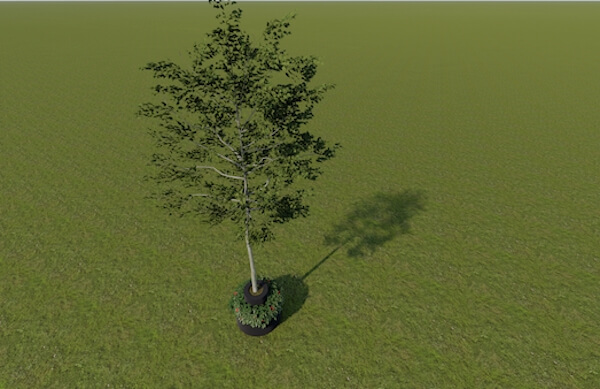Agroforestry Practices
Agroforestry is a land use management system that combines the cultivation of trees, crops, and/or livestock in a synergistic manner. It aims to create a sustainable and productive system while providing ecological, social, and economic benefits. There are several types of agroforestry practices that include silvopasture, alley cropping, forest farming, riparian buffering, shelterbelts and mutli-cropping parkland.
Feed An Island has created a new category of agroforestry that grows edible plants alongside trees for fruit or transplant.
Growing Food & Trees Together
PPlants grow in elevated sections joined together to form long linear assemblies. These 2 panel assemblies parallel one another creating 12-inch access corridors for planting, maintenance and harvesting. Each elevated section has two cavitations, one to grow trees and one to grow edible plants like vegetables, herbs, and berries. Compartmentalized root spaces permit the use of specific soil and fertilizer mixes for varying plant types. Trees require a different soil mix than vegetables, for example.
Plants are irrigated with either a commercial grade soaker hose or drip line depending on plant type. A renewable utility developed by our partner company, New Leaf Technologies, provides power for the nursery. A fence surrounds the entire facility to protect plants from animals and thievery.
Plant elevation makes for easy picking and a quick harvest and prevents the fruit of hanging plants from touching the ground, which promotes food safe practices. Edible plant types and varieties are governed by tree height. Bush beans could be grown years 1, 2 and 3 in full sun when trees are young and their undeveloped leaf canopies cast little shade. In years 4, 5 and 6, bush beans could be replaced with kale as tree leaf canopies create partial shade. Spinach and/or lettuce could be grown the final years in full shade.
Grow By Design
Raised panels may be assembled and arranged in a variety of ways to accommodate site topography. For example, a hillside can be terraced to create 15-foot-wide forest and food production pathways with a linear agroforestry assembly constructed down the center.
In another example, parallel rows of assembled panels can cover an acre of more with food and trees.
FFor an initiative in Ethiopia, we are developing open-air learning spaces characterized by three-sided enclosures made from sequentially arranged agroforestry panels. These living agroforestry courtyards will function as dynamic educational environments where instructors can educate students on cultivating food and trees using our technology. Although this may not align with our conventional Feed An Island projects, we view each of the 34 learning spaces as an instructional island, distinct in its separation and independence from the main school structure.
Agroforestry Production
A wide pocket cavity compartment is featured every 30-inches and can be utilized to grow a single tree, bush, multiple canes or large canopied vegetables, flowers, or herbs. In a tropical setting, trees for transplant are grown in every tenth cavity spacing trees about 25 feet apart. Large canopy plants are planted in the 8 wide pocket cavities between the trees.
Short top or hanging vegetables, herbs and flowers are planted in the 12-inch space provided between each of the 30-inch parallel panels, which is referred to as a narrow pocket cavity.
Trees will grow at least 15 years before the need to transplant, while edible plants are planted and replanted each season. Vegetables, flowers, and herbs are planted according to the sun and shade requirement for the plant, bush beans in the full sun and lettuce in the shade, for example.
A single 30-inch narrow cavity panel will produce 25 pounds of bush beans, 25 pounds of determinate plant tomatoes or more than 100 carrots.
 Feed An Island
Feed An Island
